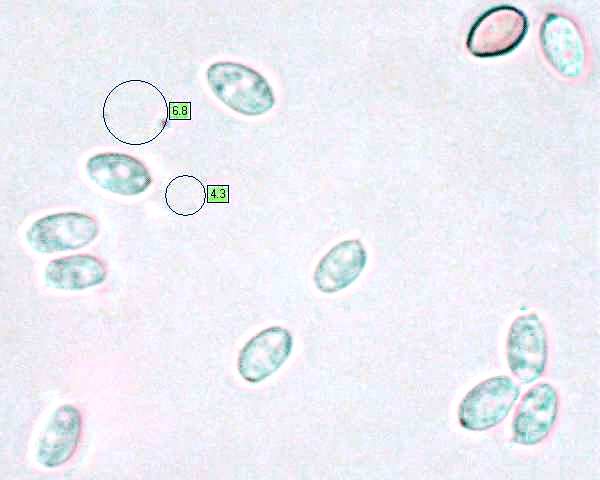Lepiota felina (Pers.) P. Karst. - Cat Dapperling
Phylum: Basidiomycota - Class: Agaricomycetes - Order: Agaricales - Family: Agaricaceae
Distribution - Taxonomic History - Etymology - Identification - Toxicity - Reference Sources
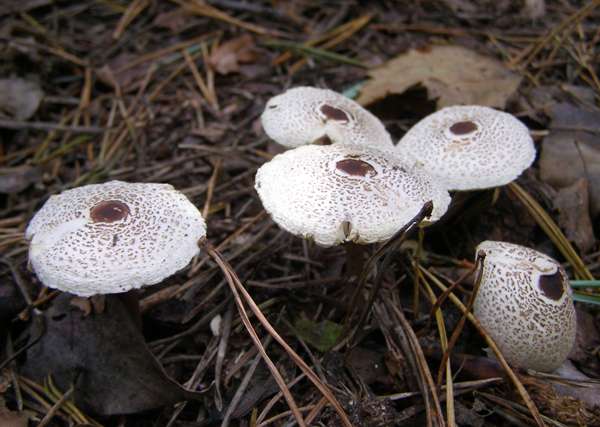
No dapperling is more dapper than this dark-scaled little mushroom of dense coniferous forests. Leopard-like in its spots, and with an almost black central eye stark against a white background, the cap is not difficult to find.
Often in small groups, these attractive mushrooms are fairly common in acid areas where conifer plantations are sited. It looks good and doesn’t even smell bad, but like other small dapperlings Lepiota felina is suspect and may be poisonous.
Distribution
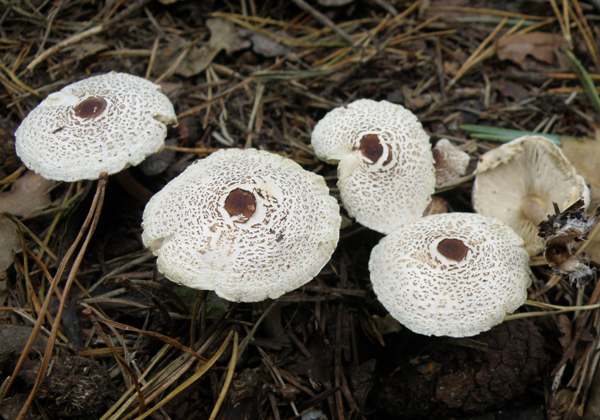
Widespread and fairly common in acidic areas of Britain and Ireland, mainly in conifer forests, Lepiota felina occurs throughout most of mainland Europe and is found also in many other parts of the world including North America.
Taxonomic history
This mushroom was described in 1801 by Christiaan Hendrik Persoon, who gave it the binomial scientific name Agaricus felinus. (In the early days of fungal taxonomy, most of the gilled mushrooms were included initially in a huge genus Agaricus; later many new genera were erected into which the majority of species were transferred, so that nowadays the genus Agaricus is rather more manageable!) It was Finnish mycologist Petter Adolf Karsten (1834 - 1917) who in 1879 transferred this species to the genus Lepiota, thereby establishing its currently-accepted scientific name Lepiota felina.
Synonyms of Lepiota felina include Agaricus felinus Pers., Agaricus clypeolarius var. felinus (Pers.) Fr., and Lepiota clypeolaria var. felina (Pers.) Gillet.
Etymology
Lepiota, the genus name, comes from Greek words Lepis-, meaning scale, and -ot, meaning ear. Scaly ear fungus is an interpretation, therefore. Scales on a convex (vaguely ear-shaped) cap are characteristic of fungi in this genus, as also are free gills and a stem ring.
The specific epithet felina means cat-like. The type of cat that immediately comes to mind when I look at these dapperlings is the leopard, Panthera pardus, a member of the family Felidae!
Identification guide
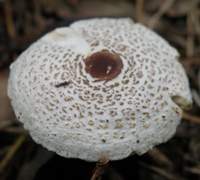 |
CapInitially hemispherical, becoming convex and sometimes almost flat with a slight umbo; white with a dark brown or black centre surrounded by concentric rings of relatively large (compared with other dapperlings of similar cap size) dark-brown scales. Cap diameter at maturity ranges from 1.5 to 3cm. |
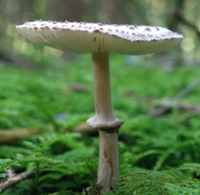 |
GillsThe free, crowded gills are white or cream, darkening with age. StemCreamy white; base slightly swollen; the persistent ring is creamy white on top and brown beneath. 2.5 to 4cm long and 2 to 4mm diameter. |
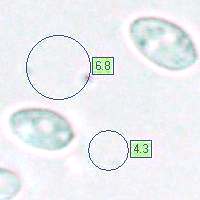 |
SporesEllipsoidal to ovoid, smooth, 6.5-8 x 3.5-4μm; dextrinoid. Spore printWhite. |
Odour/taste |
Odour earthy; taste not significant (and tasting dapperlings is inadvisable). |
Habitat & Ecological role |
Saprobic, solitary or in small groups in coniferous forests and plantations. |
Season |
July to October in Britain and Ireland. |
Similar species |
Lepiota ignivolvata has a bright orange or red-brown ring low down on the stem. Lepiota cristata is typically larger with paler scales and has an unpleasant odour. |
Toxicity
In my opinion there are no dapperlings worth collecting to eat, particularly because confident identification in the field is very difficult and several of them are seriously toxic toadstools. For example, Lepiota cristata the Stinking Dapperling is poisonous and could be mistaken for a small edible Parasol Mushroom Macrolepiota procera. If what you believe to be Parasols are smaller than 10cm in cap diameter then check very carefully, because it is possible that they are actually poisonous Lepiota species.
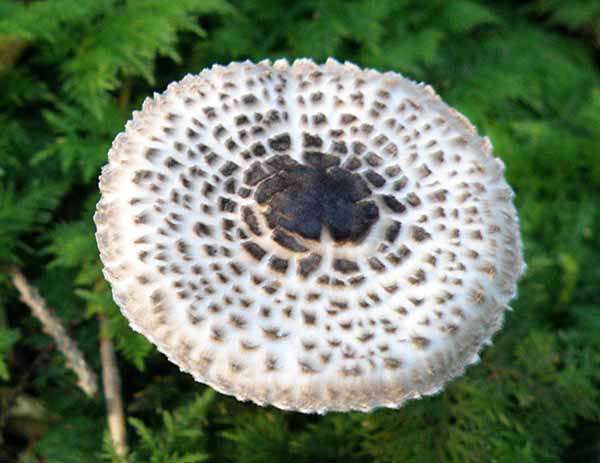
Reference Sources
Fascinated by Fungi, 2nd Edition, Pat O'Reilly 2016, reprinted by Coch-y-bonddu Books in 2022.
Funga Nordica: 2nd edition 2012. Edited by Knudsen, H. & Vesterholt, J. ISBN 9788798396130
British Mycological Society. English Names for Fungi
Dictionary of the Fungi; Paul M. Kirk, Paul F. Cannon, David W. Minter and J. A. Stalpers; CABI, 2008
Taxonomic history and synonym information on these pages is drawn from many sources but in particular from the British Mycological Society's GB Checklist of Fungi.
Fascinated by Fungi. Back by popular demand, Pat O'Reilly's best-selling 450-page hardback book is available now. The latest second edition was republished with a sparkling new cover design in September 2022 by Coch-y-Bonddu Books. Full details and copies are available from the publisher's online bookshop...
